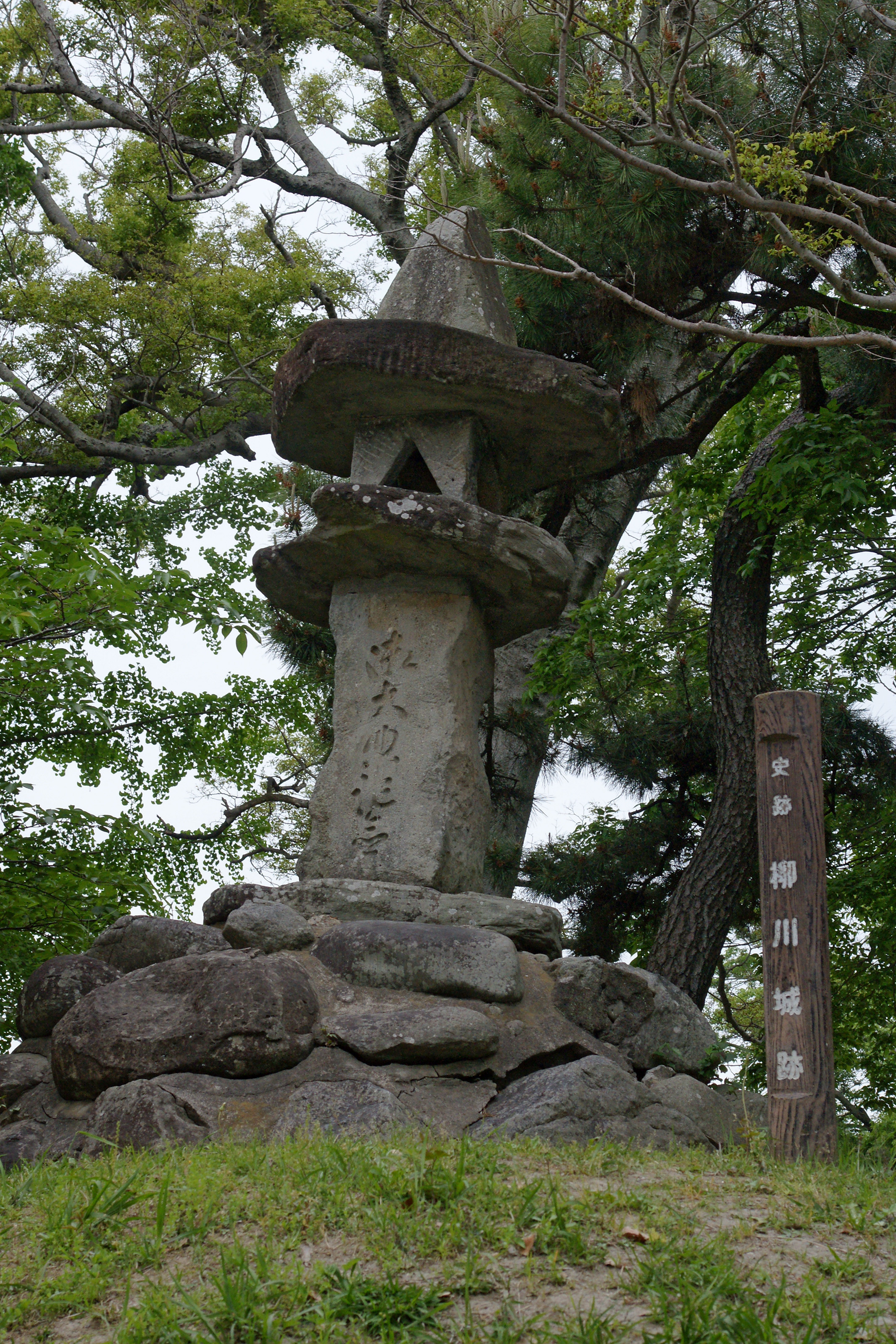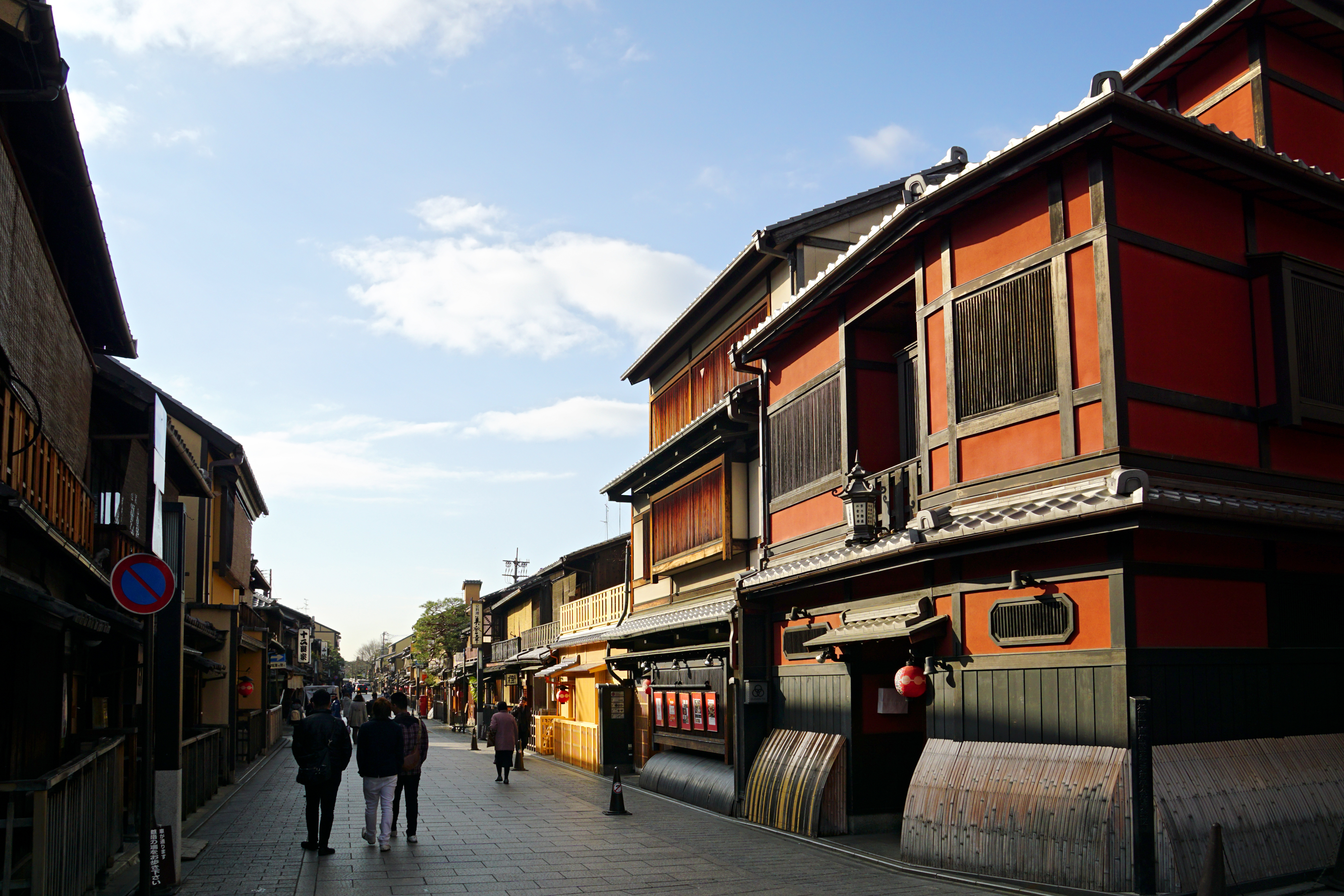|
Yanagawa Domain
was a Japanese Han (Japan), domain of the Edo period. It was associated with Chikugo Province in modern-day Fukuoka Prefecture on the island of Kyushu. In the han system, Yanagawa was a politics, political and Economics, economic abstraction based on periodic cadastral surveys and projected agricultural yields. In other words, the domain was defined in terms of ''kokudaka'', not land area.Elison, George and Bardwell L. Smith (1987)''Warlords, Artists, & Commoners: Japan in the Sixteenth Century,'' p. 18 This was different from the feudalism of the West. List of ''daimyōs'' The hereditary ''daimyōs'' were head of the clan and head of the domain. *Tanaka clan, 1600–1620 (''Tozama daimyō, tozama''; 325,000 ''koku'') #Tanaka Yoshimasa, Yoshimasa #Tadamasa Tachibana clan (samurai), Tachibana clan, 1620–1871 (''tozama''; 109,000 ''koku'') #Tachibana Muneshige, Muneshige #Tadashige #Akitora #Akitaka #Sadayoshi #Sadanori #Akinao #Akihisa #Akikata #Akihiro #Akinobu #Akit ... [...More Info...] [...Related Items...] OR: [Wikipedia] [Google] [Baidu] |
Han System
( ja, 藩, "domain") is a Japanese historical term for the estate of a daimyo in the Edo period (1603–1868) and early Meiji period (1868–1912). Nussbaum, Louis-Frédéric. (2005)"Han"in ''Japan Encyclopedia'', p. 283. or (daimyo domain) served as a system of ''de facto'' administrative divisions of Japan alongside the ''de jure'' provinces until they were abolished in the 1870s. History Pre-Edo period The concept of originated as the personal estates of prominent warriors after the rise of the Kamakura Shogunate in 1185, which also saw the rise of feudalism and the samurai noble warrior class in Japan. This situation existed for 400 years during the Kamakura Shogunate (1185–1333), the brief Kenmu Restoration (1333–1336), and the Ashikaga Shogunate (1336–1573). became increasingly important as ''de facto'' administrative divisions as subsequent Shoguns stripped the Imperial provinces () and their officials of their legal powers. Edo period Toyotomi Hideyoshi, the ... [...More Info...] [...Related Items...] OR: [Wikipedia] [Google] [Baidu] |
Feudalism
Feudalism, also known as the feudal system, was the combination of the legal, economic, military, cultural and political customs that flourished in medieval Europe between the 9th and 15th centuries. Broadly defined, it was a way of structuring society around relationships that were derived from the holding of land in exchange for service or labour. Although it is derived from the Latin word ''feodum'' or ''feudum'' (fief), which was used during the Medieval period, the term ''feudalism'' and the system which it describes were not conceived of as a formal political system by the people who lived during the Middle Ages. The classic definition, by François Louis Ganshof (1944), François Louis Ganshof (1944). ''Qu'est-ce que la féodalité''. Translated into English by Philip Grierson as ''Feudalism'', with a foreword by F. M. Stenton, 1st ed.: New York and London, 1952; 2nd ed: 1961; 3rd ed.: 1976. describes a set of reciprocal legal and military obligations which existed am ... [...More Info...] [...Related Items...] OR: [Wikipedia] [Google] [Baidu] |
Abolition Of The Han System
The in the Empire of Japan and its replacement by a system of prefectures in 1871 was the culmination of the Meiji Restoration begun in 1868, the starting year of the Meiji period. Under the reform, all daimyos (, ''daimyō'', feudal lords) were required to return their authority to the Emperor Meiji and his house. The process was accomplished in several stages, resulting in a new centralized government of Meiji Japan and the replacement of the old feudal system with a new oligarchy. Boshin War After the defeat of forces loyal to the Tokugawa shogunate during the Boshin War in 1868, the new Meiji government confiscated all lands formerly under direct control of the Shogunate (''tenryō'') and lands controlled by daimyos who remained loyal to the Tokugawa cause. These lands accounted for approximately a quarter of the land area of Japan and were reorganized into prefectures with governors appointed directly by the central government. Return of the domains The second pha ... [...More Info...] [...Related Items...] OR: [Wikipedia] [Google] [Baidu] |
Tachibana Muneshige , a wild citrus fruit native to Japan
{{disambiguation ...
The term has at least two different meanings, and has been used in several contexts. People * – a clan of ''kuge'' (court nobles) prominent in the Nara and Heian periods (710–1185) * – a clan of ''daimyō'' (feudal lords) prominent in the Muromachi, Sengoku and Edo periods (1333–1868) *Tachibana (surname) Other *Tachibana-class destroyer, a class Japanese warships during World War II *, two destroyers of the Imperial Japanese Navy *Tachibana, Fukuoka, a former town in Fukuoka Prefecture *Tachibana Station, a railway station in Hyogo Prefecture *Tachibana castle, a castle which formerly stood atop Tachibana Mountain *Tachibana orange The tachibana orange (''Citrus tachibana,'' or ''Citrus reticulata tachibana'') is a variety of mandarin orange, a citrus fruit. They grow wild in the forests of Japan and are referred to in the poetry of the early Japanese and Ryukyu Islands ki ... [...More Info...] [...Related Items...] OR: [Wikipedia] [Google] [Baidu] |
Tachibana Clan (samurai)
The Tachibana clan (立花氏) was a Japanese clan of ''daimyō'' (feudal lords) during Japan's Sengoku and Edo periods. Originally based in Tachibana castle in Kyūshū, the family's holdings were moved to the Yanagawa Domain in the far north-east of Honshū in the Edo period. The clan, which bore no direct relation to the Tachibana clan of the Heian period, originated with Ōtomo Sadatoshi (d. 1336), who took on the name and assigned it to the family of Ōtomo vassals who held Tachibana castle. For a time, the Tachibana served as loyal retainers under the Ōtomo clan, regularly battling the Shimazu, rivals to the Ōtomo. In the mid-16th century, a conflict between Ōtomo Akitoshi and Ōtomo Sōrin led to the former splitting from the family, and taking the name Tachibana Dōsetsu. Dōsetsu had no sons, and nominated his daughter, Tachibana Ginchiyo, to succeed him. Shortly afterwards, she would marry Takahashi Munetora, a vassal of Toyotomi Hideyoshi, who helped defeat the ... [...More Info...] [...Related Items...] OR: [Wikipedia] [Google] [Baidu] |
Gion Mamori Inverted
is a district of Higashiyama-ku, Kyoto, Japan, originating as an entertainment district in the Sengoku period, in front of Yasaka Shrine (Gion Shrine). The district was built to accommodate the needs of travellers and visitors to the shrine. It eventually evolved to become one of the most exclusive and well-known geisha districts in all of Japan. Gion is the Japanese translation (via Chinese ''Qiyuan'') of the Buddhist term Jetavana. The geisha in Kyoto do not refer to themselves as geisha, instead using the local term . While the term geisha means "artist" or "person of the arts", the more direct term means essentially "a woman of art". Divisions Gion houses two , or geisha districts: and . The two were originally the same district, but split many years ago. Gion Kobu is larger, occupying most of the district including the famous street Hanamikoji, while Gion Higashi is smaller and occupies the northeast corner, centered on its rehearsal hall. Despite the considerable de ... [...More Info...] [...Related Items...] OR: [Wikipedia] [Google] [Baidu] |
Tanaka Yoshimasa
is the fourth most common Japanese surname. It is typically written with the kanji for . Less common variants include , , , , and . People with the surname *, Japanese musician formerly known as Boku no Lyric no Bōyomi *, Japanese voice actress *, Japanese hurdler *, Japanese footballer *, Japanese women's footballer *, Japanese footballer * Atsuko Tanaka (other), multiple people *Ayumi Tanaka (born 1986), Japanese pianist and composer *, Japanese aikidoka *, Japanese model and actress *, Japanese Buddhist scholar and preacher *, Japanese speed skater *, Japanese playwright and dramatist *, Japanese merchant *, Japanese photographer *, Japanese botanist and mycologist *, Japanese baseball player *, Japanese basketball player *, Japanese footballer *Dean Tanaka, the birth name of Dean Cain (born 1966), American actor *, Japanese Nordic combined skier *, Japanese anime producer *, Japanese film director, screenwriter, and actor *Elly Tanaka (born 1965), biochemist *, Japa ... [...More Info...] [...Related Items...] OR: [Wikipedia] [Google] [Baidu] |
Koku
The is a Chinese-based Japanese unit of volume. 1 koku is equivalent to 10 or approximately , or about . It converts, in turn, to 100 shō and 1000 gō. One ''gō'' is the volume of the "rice cup", the plastic measuring cup that is supplied with commercial Japanese rice cookers. The ''koku'' in Japan was typically used as a dry measure. The amount of rice production measured in ''koku'' was the metric by which the magnitude of a feudal domain (''han'') was evaluated. A feudal lord was only considered ''daimyō'' class when his domain amounted to at least 10,000 ''koku''. As a rule of thumb, one ''koku'' was considered a sufficient quantity of rice to feed one person for one year. The Chinese equivalent or cognate unit for capacity is the ''shi'' or ''dan'' ( also known as ''hu'' (), now approximately 103 litres but historically about . Chinese equivalent The Chinese ''shi'' or ''dan'' is equal to 10 ''dou'' () " pecks", 100 ''sheng'' () "pints". While the current ''shi' ... [...More Info...] [...Related Items...] OR: [Wikipedia] [Google] [Baidu] |
Tozama Daimyō
was a class of powerful magnates or ''daimyō'' (大名) considered to be outsiders by the ruler of Japan.Kenkyusha's New Japanese-English Dictionary, ''Tozama daimyō'' were classified in the Tokugawa Shogunate (江戸幕府) as ''daimyō'' who became hereditary vassals of the Tokugawa after the Battle of Sekigahara (関ヶ原の戦い). ''Tozama daimyō'' were discriminated against by the Tokugawa and opposed to the ''fudai daimyō'' during the Edo period (江戸時代). Origins Originally, the concept of ''tozama daimyō'' emerged in Japan along with the ''daimyō'' after the rise of the Kamakura Shogunate (鎌倉幕府) in the 12th Century. ''Tozama'' applied to a ''daimyō'' who was considered an "outsider" by successive ''Shōguns'', Emperors, and ''shikkens'' (執権) that ruled over Japan at any given time. Typically, a ''tozama'' had a loose or indirect relationship with the current ruler, and this definition remained intact during the subsequent Ashikaga Shogunat ... [...More Info...] [...Related Items...] OR: [Wikipedia] [Google] [Baidu] |
Tanaka Clan
is the fourth most common Japanese surname. It is typically written with the kanji for . Less common variants include , , , , and . People with the surname *, Japanese musician formerly known as Boku no Lyric no Bōyomi *, Japanese voice actress *, Japanese hurdler *, Japanese footballer *, Japanese women's footballer *, Japanese footballer * Atsuko Tanaka (other), multiple people *Ayumi Tanaka (born 1986), Japanese pianist and composer *, Japanese aikidoka *, Japanese model and actress *, Japanese Buddhist scholar and preacher *, Japanese speed skater *, Japanese playwright and dramatist *, Japanese merchant *, Japanese photographer *, Japanese botanist and mycologist *, Japanese baseball player *, Japanese basketball player *, Japanese footballer *Dean Tanaka, the birth name of Dean Cain (born 1966), American actor *, Japanese Nordic combined skier *, Japanese anime producer *, Japanese film director, screenwriter, and actor *Elly Tanaka (born 1965), biochemist *, Japa ... [...More Info...] [...Related Items...] OR: [Wikipedia] [Google] [Baidu] |
Daimyō
were powerful Japanese magnates, feudal lords who, from the 10th century to the early Meiji era, Meiji period in the middle 19th century, ruled most of Japan from their vast, hereditary land holdings. They were subordinate to the shogun and nominally to the Emperor of Japan, emperor and the ''kuge''. In the term, means 'large', and stands for , meaning 'private land'. From the ''shugo'' of the Muromachi period through the Sengoku period, Sengoku to the ''daimyo'' of the Edo period, the rank had a long and varied history. The backgrounds of ''daimyo'' also varied considerably; while some ''daimyo'' clans, notably the Mōri clan, Mōri, Shimazu clan, Shimazu and Hosokawa clan, Hosokawa, were cadet branches of the Imperial family or were descended from the ''kuge'', other ''daimyo'' were promoted from the ranks of the samurai, notably during the Edo period. ''Daimyo'' often hired samurai to guard their land, and they paid the samurai in land or food as relatively few could aff ... [...More Info...] [...Related Items...] OR: [Wikipedia] [Google] [Baidu] |



